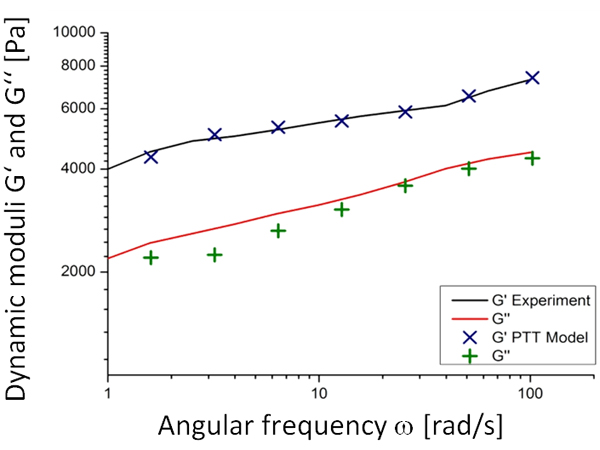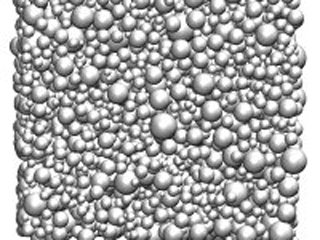Complex fluids
Options
The particle-based simulation approach using smoothed particle hydrodynamics means that SimPARTIX® is ideal for simulating fluids under complicated boundary conditions. Besides a standard model for Newtonian fluids such as water, there are also physical models available for simulating media with complex rheological behavior (e.g. with thixotropy, i.e. a viscosity that changes over time, or with viscoelasticity). Typical fluids that can be simulated with SimPARTIX® include colloidal suspensions, pastes, polymer solutions and gels, also electrorheological and magnetorheological fluids.
Two different forms of simulation are possible:
Macroscopic approach: simulation of production processes based on continuum mechanics for targeted optimization
Microscopic approach: direct simulation of the internal structure of the fluid for an in-depth understanding
The two approaches can be combined of course, e.g. by incorporating the results of the microscopic simulation in the macroscopic rheology model.
Viscoelasticity

A variety of industrial processes rely on the application of fluids that possess a viscoelastic behavior. The simulation of viscoelastic fluids is of great relevance for industrial applications in order to predict the behavior of viscoelastic materials during production processes or of consumer related products showing viscoelastic properties. Deeper knowledge about the flow behavior is necessary for example for processes such as abrasive flow machining of industrial products for the surface finishing of complex geometries or for the extrusion of polymeric pastes. Examples of viscoelastic media are polymeric suspensions and polymeric melts, paints, food, hygienic and pharmaceutical products.
With the application of the simulation tool SimPARTIX® it is possible to numerically reconstruct the behavior of viscoelastic fluids, and apply the viscoelastic model directly for the simulation of industrial processes.
Macroscopic simulation

In the macroscopic approach the simulated fluid is handled according to the laws of continuum mechanics, i.e. it is assumed to be a continuous medium with given rheological properties. This approach is ideal for simulating manufacturing and forming processes. Compared with a mesh-based method using a conventional CFD approach, the mesh-free SPH method employed here offers many advantages in terms of the treatment of free surfaces and transport processes.
A macroscopic simulation enables complex processes to be emulated and optimized directly in the computer. The entire flow profile is calculated and so it is possible to carry out a specific search for unfavorable flow conditions. In addition, parametric studies can be used to investigate how process and material parameters affect the flow behavior. Costly trial-and-error experiments can therefore be avoided.
Microscopic simulation
A microscopic simulation can be used to obtain in-depth insights into the behavior of a complex fluid. For example, a colloidal suspension can be simulated directly at particle level by modeling the interaction of the individual solid particles with each other and with the solvent. In doing so, both the hydrodynamic interaction and also microscopic forces (e.g. van der Waals, electrostatic or steric forces) are taken into account.
Model experiments and representative volume cells mean it is possible to use microscopic simulations to make predictions about macroscopic properties (e.g. viscosity, degree of anisotropy, etc.). This approach allows prognoses to be made about how certain changes to material properties (e.g. particle size and form in a suspension) might affect the macroscopic behavior. It is therefore possible to optimize the properties of the complex fluid.
 Fraunhofer Institute for Mechanics of Materials IWM
Fraunhofer Institute for Mechanics of Materials IWM